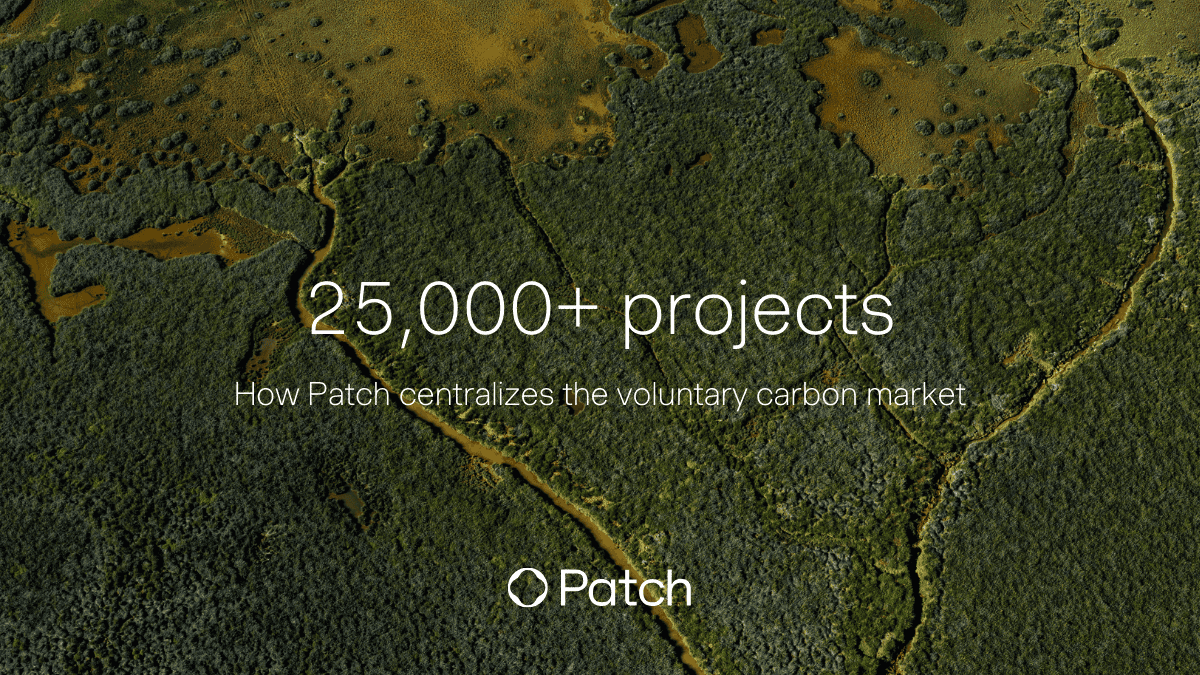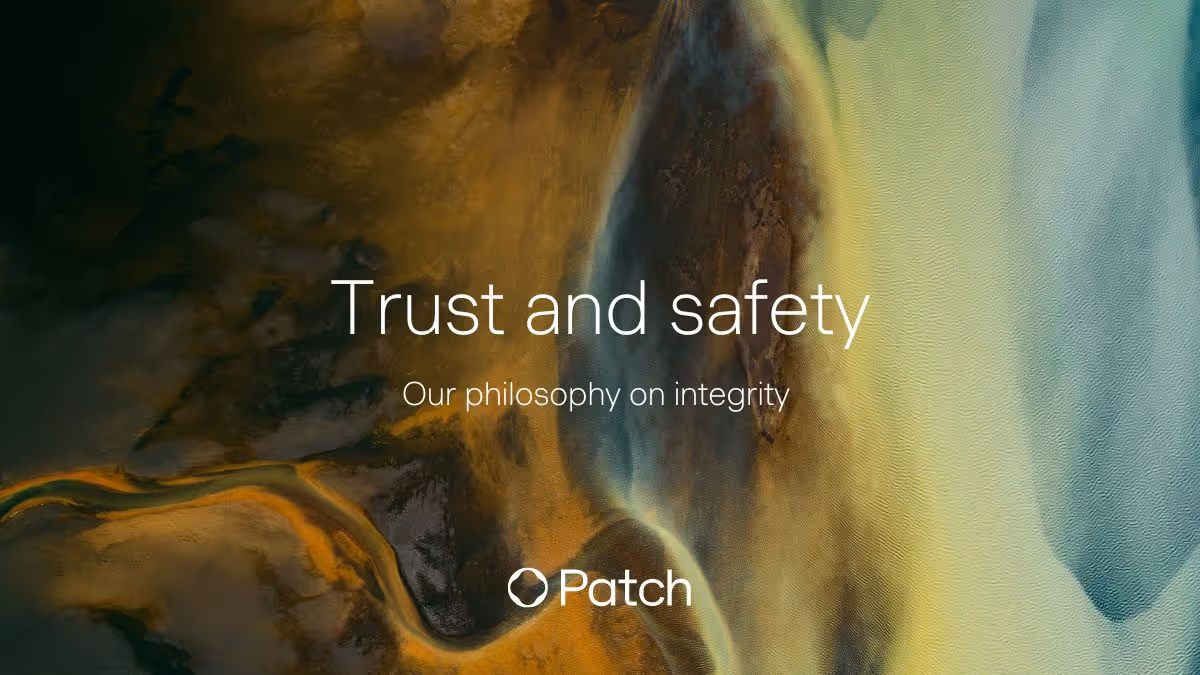Carbon credits are completely unique economic units. They need unique software purpose-built to manage and sell them.
But how are they unique? And why won’t current software systems work?
Even though a carbon credit shares properties with commodities, bonds, equities, or other economic units, they can’t be considered a perfect like-for-like with either a purely physical commodity or an intangible asset.
Ultimately, you can’t hold one in your hands, but each credit has a real, measurable impact on the physical world. And each one also has physical dependencies that depend on the processes that created it.
Keeping track of those processes and characteristics is complex but important. The credibility of an industry rides on carbon credit sellers accurately accounting for every single tonne.
But we aren’t talking about just any industry.
The voluntary carbon market will be crucial to rebalancing our planet. The cost of mistakes or inefficiencies could be measured in degrees.
Every carbon credit represents real carbon emissions removed or reduced from our atmosphere. By scaling up the global supply of carbon credits, these companies are scaling up our chances of a livable future.
And that’s why current solutions won’t work: because they don’t scale.
For years, many carbon credit suppliers have been managing their business in spreadsheets and homegrown systems, which can be clunky and resource-intensive, and so they’ll struggle to scale to the gigatonne level. With the stakes as high as they are, there’s a need for software designed to handle the complexity of the credit’s end-to-end journey.
.avif)
Introducing CarbonOS: the operating system for the carbon market
Businesses that sell carbon credits have three main tasks to accomplish:
- Rebalance the planet
- Grow revenues to reinvest in task 1
- Scale operations to support task 2
In conversations with our partners producing and selling credits, we learned that tasks 2 and 3 aren’t as efficient as they could be to move the needle on task 1. They were buried in multiple siloed spreadsheets or legacy software tools. Demonstrating the rigor customers were looking for could be massively complicated. And when it came to selling the credits, we learned that dedicated infrastructure to do it safely, seamlessly, and at the necessary scale — including multi-year contracts or fractional purchasing — could unlock lucrative new revenue for them.
Here’s what we heard from suppliers in their own words:
“CarbonOS is built for purpose and is an instrumental part of our day-to-day. By enabling us to focus on relationships while the platform does the heavy lifting, CarbonOS helps us best support our partners in achieving their voluntary climate action plans.”
Oliver Forster, VP Sales at Carbon Streaming Corporation
"Having the right tools in place to scale is essential to our business. Before Patch CarbonOS, we manually tracked inventory. But as we grow, manually tracking takes more and more time. Now, we can easily manage available inventory and reserve credits for upcoming re-purchases."
Leah VanRyn, VP of Growth at Eion
“Our partnership with Patch stemmed from their ability to help us access buyers at scale with virtually zero resources. As we’ve gone deeper into the tech stack, it’s clear that Patch is shaping the future of this market with its flexible and rapidly evolving technology platform. As Aspiration seeks to rapidly scale high-impact carbon solutions, collaboration between our companies just made sense.”
Tate Mill, Chief Business Development Officer at Aspiration
“Our team needed a way to streamline operational workflows that were taking up valuable time, and make it easy to understand the state of our business at a glance. We evaluated multiple solutions, and ultimately selected Patch CarbonOS because it solved these problems in the most robust way.”
Josh Santos, CEO at Noya
We talked to many, many more suppliers looking for ways to become more efficient so they could focus more energy on producing more credits to make an even bigger impact: Vesta, AspiraDAC, Brilliant Planet, Anew, MASH Makes, Grassroots Carbon, GECA — the list goes on.
They’re the reason Patch built CarbonOS — to be the infrastructure that helps companies like these scale their operations and grow their revenue to make a livable future inevitable. Carbon credit suppliers are already using the Patch platform to manage and ultimately deliver over 130M tonnes of carbon credits. For context, the global voluntary carbon market retired 156M tonnes in 2022.
The platform has two parts today: credit management and sales & distribution. Carbon credit suppliers can choose to adopt the full product suite, or use only the parts of CarbonOS that meet their needs today. If you’re a carbon credit supplier, we invite you to take a demo to see it in action!
How CarbonOS helps suppliers manage credits
The first way CarbonOS helps you scale up and streamline operations is by helping you ditch spreadsheets and paper contracts. Data from every stage of your credit lifecycle is logged throughout the process. You can instantly spot and audit changes across all your teams. Visualizing your data is built into the software to make managing credits easy and error-free.
This detailed, digital tracking increases and proves the rigor of your credits to reduce risk to your company and customers. Each credit is tracked end to end, from estimation to actual to sales and delivery, helping you demonstrate credibility to both your buyers and third party reviewers. You define the process for tracking, then CarbonOS builds accurate inventory estimates based on that process. It logs your actuals based on verified and issued totals to give you a complete view of your credit inventory.
CarbonOS lets you set risk reserves to help you guard against overselling estimates, which can be easily adjusted over time as you benchmark your historical deliveries against your supply. When you sell credits, you can record bespoke delivery requirements and schedules for every sale and see these details when it’s time to deliver them. This helps reduce the risk for delivery errors — especially for custom retirements.
As you scale, your processes and operations get more complicated — especially as you unlock new sales channels. CarbonOS was designed to scale with you to help you manage that complexity.
But credit management is only half of the value. CarbonOS’ sales & distribution solutions solves the second task.
How CarbonOS helps sellers grow their revenue
Let’s go back to the carbon credit and what makes it unique. If you’re selling a physical good, transacting is simple: exchange the object for money. If you’re dealing in intangible assets like stocks or bonds, there are very established channels, systems, and technology infrastructure that give both buyer and seller confidence in the transaction.
CarbonOS was built to be that technology infrastructure for the carbon market.
Out of the box, you can deliver a seamless purchase experience to your customers, either on your website or through a direct purchase link. You can also sell directly to customers on the Patch marketplace if you choose — customers including Starling Bank, EQT, Credit Suisse, and Route. In that case, Patch is your second sales team. We’re constantly marketing and acquiring new purchasers for your merchandise, which means you can collect passive revenue as we sell to new customers without investing any additional resources.
Our platform offers sellers flexible pathways to meet buyer demand where it is.
- One-time purchases of any size
- Multi-year offtake agreements
- Selling through a network or channel
- Embedding credit sales in any digital consumer transaction
And because CarbonOS also includes the credit management functionality we already discussed, tracking data from orders processed from the Patch marketplace happens automatically. It will be’s visible side-by-side with sales from all your other channels.
CarbonOS enables a seamless purchase experience and secure, PCI compliant payments — whether Patch-sourced or supplier-sourced. When you sell through Patch, buyers receive a link to track their order status. A purchase certificate is generated, and it updates to reflect delivery confirmation at the moment you fulfill the order. These layers of transparency and risk reduction help build trust with buyers and regulators.
The infrastructure for the carbon market of the future
We don’t know exactly what the future of the voluntary carbon market will look like. We expect it to change and evolve rapidly, and so will CarbonOS to keep pace with the changes. This software was developed through countless conversations with suppliers who are truly making a difference for the future livability of our planet. But all that is still just the beginning. CarbonOS will always be a work in progress — at least as long as our climate is a work in progress.
And even though the carbon market is pretty novel compared to most industries, it’s long past time for purpose-built infrastructure to help it take the next step toward gigatonne scale. If you’re a supplier of carbon credits, we hope you’ll get started with CarbonOS to find out how it can help manage your credit inventory so you can grow your revenue and ultimately get back to your mission: rebalancing the planet.






